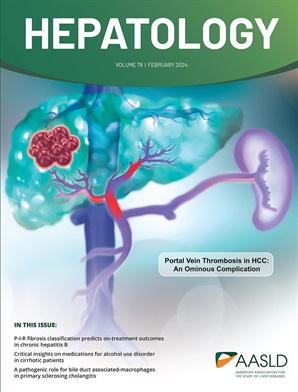Corticosteroids in severe alcohol-associated hepatitis? Not so fast: A systematic review of randomized controlled trials
IF 12.9
1区 医学
Q1 GASTROENTEROLOGY & HEPATOLOGY
引用次数: 0
Abstract
Background: Severe alcohol-associated hepatitis (AH) is rising in incidence with a high mortality burden. While corticosteroids are recommended for eligible patients with severe AH, no guidance exists for the timing of steroid initiation, tapering regimens, and surveillance of adverse events. Objective: We aim to systematically review these variables and provide evidence-based recommendations for the inpatient and outpatient management of severe AH. Design: We performed a literature search from inception to 5/30/2024 to include clinical trials published in full form and assessed the quality of evidence using the Cochrane Risk of Bias tool. Data were collected on the timing of initiation, rate, and complications following steroid therapy, and taper regimens in the setting of severe AH. Results: Of 28 studies that fulfilled our inclusion criteria, median time from admission to steroid initiation was 6.5 days. The most common steroid dosing regimen was prednisolone 40 mg daily for 28 days. Twenty-five studies containing 3,196 subjects reported adverse events, with exactly 50% in the steroid arm and the other half in the comparison arm. Infections, gastrointestinal bleeds, and renal impairment were the most frequently reported adverse events. Most infections occurred within the first month of the study. A two-week steroid taper was the most frequently reported regimen. Conclusion: We recommend taking up to a week to systematically and thoroughly evaluate patients before initiating steroids, and vigilant monitoring in the first month of treatment. We also recommend the lowest possible steroid exposure with a two-week steroid taper and close outpatient follow-up.求助全文
约1分钟内获得全文
求助全文
来源期刊

Hepatology
医学-胃肠肝病学
CiteScore
27.50
自引率
3.70%
发文量
609
审稿时长
1 months
期刊介绍:
HEPATOLOGY is recognized as the leading publication in the field of liver disease. It features original, peer-reviewed articles covering various aspects of liver structure, function, and disease. The journal's distinguished Editorial Board carefully selects the best articles each month, focusing on topics including immunology, chronic hepatitis, viral hepatitis, cirrhosis, genetic and metabolic liver diseases, liver cancer, and drug metabolism.
 求助内容:
求助内容: 应助结果提醒方式:
应助结果提醒方式:


